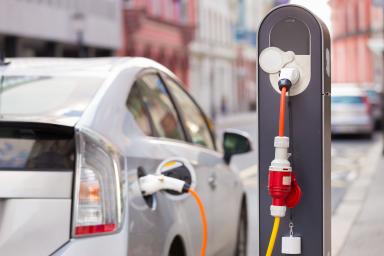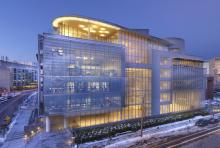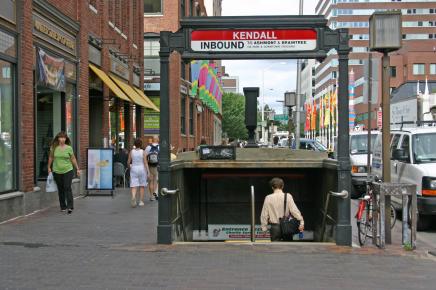MIT measures campus emissions that contribute to climate change. The current inventory includes emissions for fiscal years 2014, 2015, and 2016 in three areas: building energy use, fugitive gases, and campus-owned vehicles.

Air quality is a measure of the concentration of pollution in the surrounding air over a period of time. There are many sources of air pollutants and factors that can effect air quality: emissions from energy production, vehicle exhaust, solvent fumes, methane from waste, smoke, organic matter like pollen, and changes in the weather. The quality of the air, both indoors and out, can have a significant impact on the health of the MIT community and that of the surrounding natural environment.
Air pollution and climate change are also inextricably linked. Heat waves and flooding can lead to mold growth, for example. Climate change also fosters greater pollen production, increasing the concentration of allergens in the air.
Local air quality in and around Kendall Square
At MIT, scientists, transportation experts, urban planners, and engineers are working on ways to monitor and cut down on air pollution both locally and globally. At the MIT Office of Sustainability (MITOS), we’re supporting these endeavors by providing data on MIT’s campus emissions through our yearly greenhouse gas inventory to be used for mitigation strategies. We’re building connections between staff and researchers to put theory into practice and use our campus as a test bed for strategies to improve indoor and outdoor air quality.
Strategies
Here are just a few of the air quality strategies we’re advancing:
- promoting sustainable transportation—public transit, biking, carpooling, and walking
- sourcing food and materials regionally to cut down on fossil fuels burned in the transportation of goods
- strengthening our infrastructure to withstand the challenges presented by climate change
- designing all new indoor environments to meet LEED v4 standards
MITOS is currently working collaboratively to improve campus air quality system via operations, education, research, and innovation in the following areas.
Access MIT represents the Institute’s progressive vision for rethinking the culture of commuting and encouraging sustainable transportation practices. One of its goals is to reduce parking demand – and traffic –in and around the Cambridge campus.

New construction and major renovation projects on campus aim to meet the national LEED Gold (version 4) certification standard, which includes measures to achieve better indoor air quality. At present, six buildings have achieved LEED gold or silver certification for new construction.
The Department of Facilities develops and constructs sustainable buildings on MIT’s campus, in addition to maintaining and keeping them clean once the buildings are in operation.
The Environment, Health and Safety Office leads MIT's efforts for assessing and safeguarding indoor and outdoor air quality.




